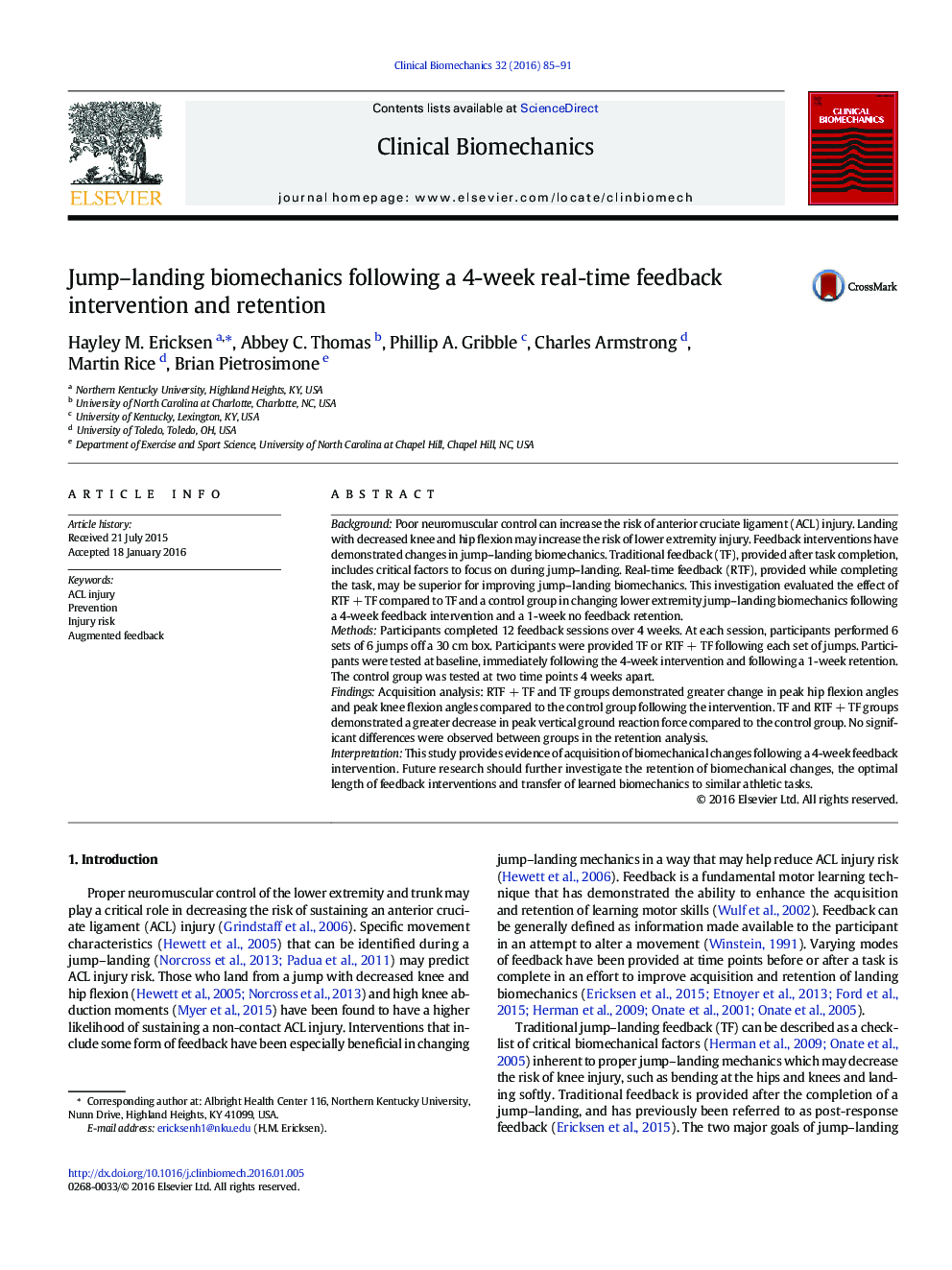| Article ID | Journal | Published Year | Pages | File Type |
|---|---|---|---|---|
| 6204605 | Clinical Biomechanics | 2016 | 7 Pages |
â¢Four-week feedback intervention demonstrates kinematic changes during jump-landing.â¢RTF and TF decreased jump-landing forces following the 4-week intervention.â¢Evidence of retention of biomechanical changes was not statistically significant.â¢Applying real-time feedback clinically may impact transfer and injury rate reduction.
BackgroundPoor neuromuscular control can increase the risk of anterior cruciate ligament (ACL) injury. Landing with decreased knee and hip flexion may increase the risk of lower extremity injury. Feedback interventions have demonstrated changes in jump-landing biomechanics. Traditional feedback (TF), provided after task completion, includes critical factors to focus on during jump-landing. Real-time feedback (RTF), provided while completing the task, may be superior for improving jump-landing biomechanics. This investigation evaluated the effect of RTFÂ +Â TF compared to TF and a control group in changing lower extremity jump-landing biomechanics following a 4-week feedback intervention and a 1-week no feedback retention.MethodsParticipants completed 12 feedback sessions over 4Â weeks. At each session, participants performed 6 sets of 6 jumps off a 30Â cm box. Participants were provided TF or RTFÂ +Â TF following each set of jumps. Participants were tested at baseline, immediately following the 4-week intervention and following a 1-week retention. The control group was tested at two time points 4Â weeks apart.FindingsAcquisition analysis: RTFÂ +Â TF and TF groups demonstrated greater change in peak hip flexion angles and peak knee flexion angles compared to the control group following the intervention. TF and RTFÂ +Â TF groups demonstrated a greater decrease in peak vertical ground reaction force compared to the control group. No significant differences were observed between groups in the retention analysis.InterpretationThis study provides evidence of acquisition of biomechanical changes following a 4-week feedback intervention. Future research should further investigate the retention of biomechanical changes, the optimal length of feedback interventions and transfer of learned biomechanics to similar athletic tasks.
